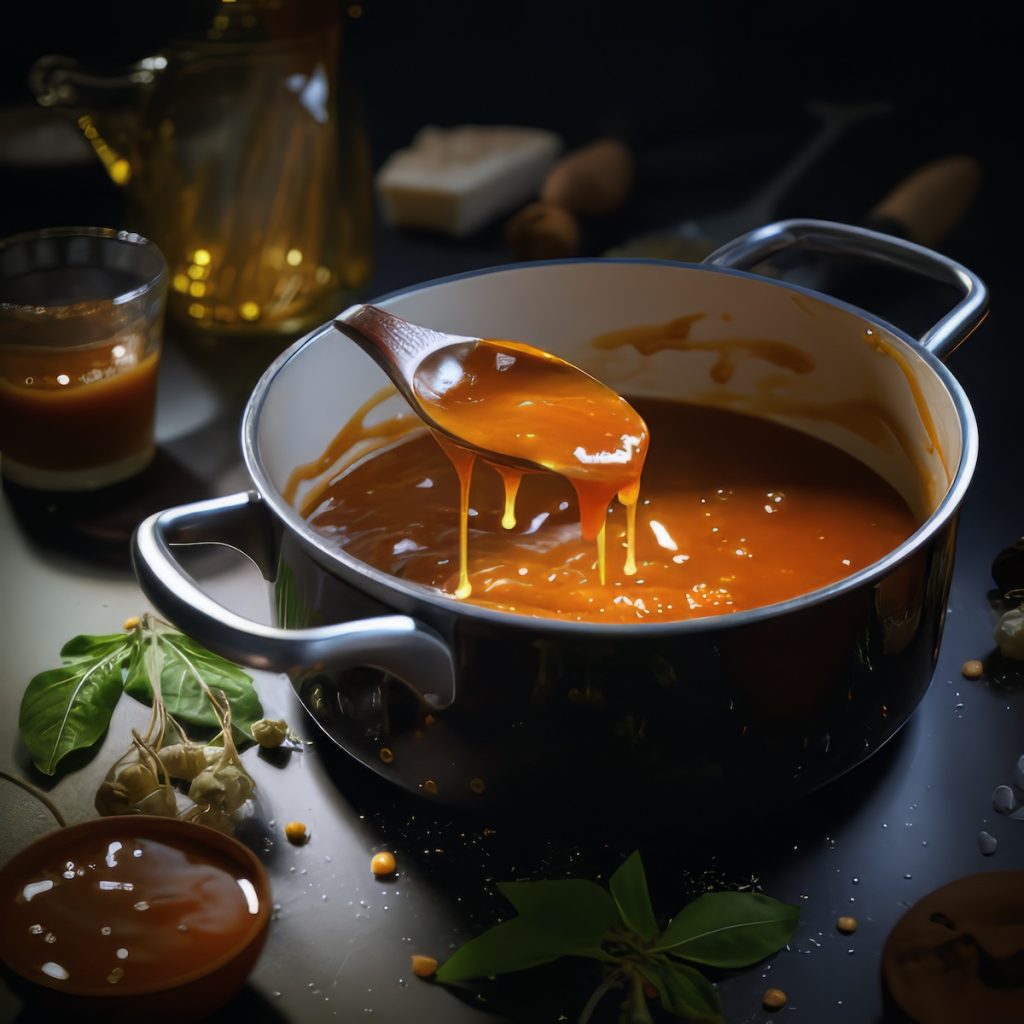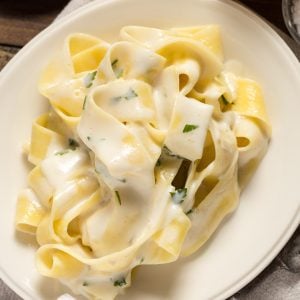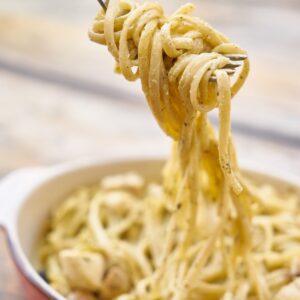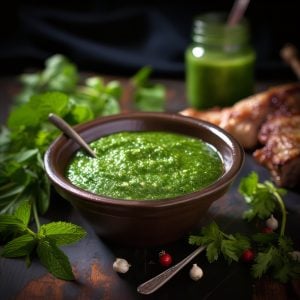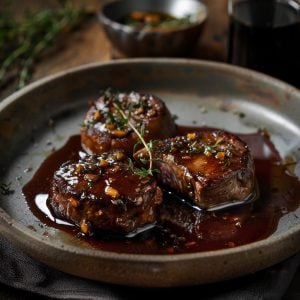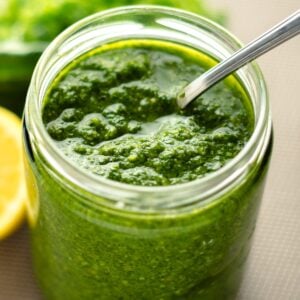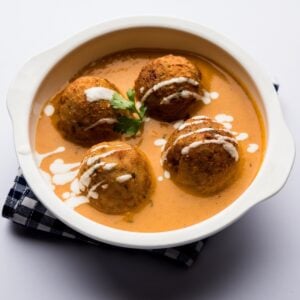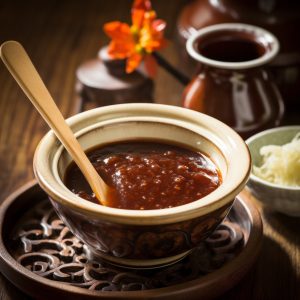Got My Mojo Glaze Working
The definition for “mojo” is a magic charm, talisman, or spell. Over the years, mojo has been used in song titles and lyrics, including “Got My Mojo Working, a blues song written by Preston “Red” Foster and made popular by Muddy Waters in 1957.
Jim Morrison of the Doors used the phrase “Mr Mojo Risin” in his classic song LA Woman, and it is actually an anagram of his name. OK, now I’m really getting off track.
The mojo I’m referring to here is a mojo glaze or sauce that I found in one of my cooking magazines for crusted pork nuggets, but I can’t wait to try this glaze on chicken, fish, or even some vegetable dishes. I can also see myself using it to add some “mojo” to some steamed asparagus or carrots.
When I did a search for mojo glaze, I found the recipes changed some based on what part of the world the recipe comes from. According to Wikipedia, the word “mojo” comes from “Portuguese molho, meaning “sauce” and is the name, or abbreviated name, of several types of sauces.”
What Is Mojo Glaze?
Mojo glaze, a vibrant and flavorful concoction, is a versatile sauce that adds a zesty kick to various dishes. Rooted in the culinary traditions of the Caribbean and Latin America, mojo glaze is renowned for its bold combination of citrus, garlic, herbs, and spices, creating a symphony of tastes that tantalize the taste buds.
At its core, mojo glaze typically features a base of fresh citrus juices, such as orange and lime, which impart a bright and tangy essence to the sauce. The citrusy notes are balanced by the pungent and aromatic qualities of garlic, a key ingredient that forms the backbone of the glaze. Additional components, such as oregano, cumin, and cilantro, contribute to the complex flavor profile, elevating the sauce to new heights.
One of the distinctive features of mojo glaze is its ability to enhance a wide array of dishes. Whether used as a marinade for meats, a dipping sauce for grilled vegetables, or a salad dressing, mojo glaze brings freshness and depth to every bite. It effortlessly transforms simple ingredients into culinary masterpieces, infusing them with a fusion of tropical and savory elements.
Preparing mojo glaze is an art, with variations existing across different regions and culinary traditions. Some recipes may incorporate a hint of spice through chili peppers or paprika, while others might experiment with unique herbs to add a personalized touch. Regardless of the specific recipe, the common thread that ties all mojo glazes together is the commitment to capturing the essence of vibrant, bold flavors.
Whether you’re seeking to elevate your barbecue experience, infuse a tropical twist into your cooking, or explore the diverse world of culinary delights, mojo glaze is a testament to the power of a well-crafted sauce to transform the ordinary into the extraordinary. Its lively and invigorating character makes it a staple in the kitchen for those who crave a burst of flavor that dances on the palate.
Other Names for Mojo Glaze
This glaze goes by various names across different cultures and regions, each reflecting the local influences and variations in its preparation. Here are some alternative names for mojo glaze:
- Mojo Sauce: This straightforward name encapsulates the glaze’s essence, emphasizing its saucy and flavorful nature.
- Mojo Criollo: In some Latin American countries, especially in Cuba, the glaze may be referred to as Mojo Criollo, emphasizing the traditional and regional aspects of the sauce.
- Mojo Verde: This name, translating to “green sauce,” is often used when the glaze incorporates a significant amount of fresh herbs like cilantro and parsley, giving it a vibrant green color.
- Mojo Picon: Common in Spanish cuisine, Mojo Picon typically includes spicy elements like paprika or chili peppers, adding a fiery kick to the traditional mojo glaze.
- Sofrito: In some contexts, especially in Caribbean cuisine, a similar sauce may be referred to as sofrito. While not exactly the same, sofrito shares some common ingredients, including garlic, onions, and herbs.
- Chimichurri: Although not precisely the same, chimichurri shares some similarities with mojo glaze. It is a South American sauce made with parsley, garlic, vinegar, and oil, and is often used as a condiment for grilled meats.
- Aji Amarillo Sauce: In Peruvian cuisine, a sauce called Aji Amarillo is made with a specific type of yellow chili pepper. While distinct from mojo glaze, it shares the use of vibrant flavors.
- Salsa Verde: This term, meaning “green sauce” in Spanish, is used in various cuisines to describe a sauce typically made with tomatillos and green chili peppers. In some contexts, it may overlap with the characteristics of mojo glaze.
These names reflect the diverse ways this flavorful sauce is prepared and enjoyed worldwide, each with its unique regional twists and cultural nuances.
Mojo Glaze Recipe
Ingredients
- 4 tablespoons red onion minced
- 2 tablespoons fresh garlic minced
- 2 tablespoons olive oil
- ½ cup orange marmalade Seville if you can find it
- 3 tablespoons fresh lime juice
- 2 teaspoons fresh chives minced
Instructions
- Heat a saute pan over medium heat until hot, add oil and when hot, add the onions. Cook for 1 minute and then add the garlic and cook for an additional minute or two.
- Be sure to keep stirring with a wooden spoon so the garlic doesn't burn. If you burn the garlic, toss and start over again. Burnt garlic does not do anything for this sauce.
- Add the marmalade and lime juice, stir and bring to a simmer. Let this cook down until the glaze begins to thicken and can coat the back of a metal spoon.
- As soon as the glaze reaches the desired consistency, remove the pan from the heat and stir in the minced chives.
- The glaze is ready to serve over pork, chicken, beef or vegetables.

